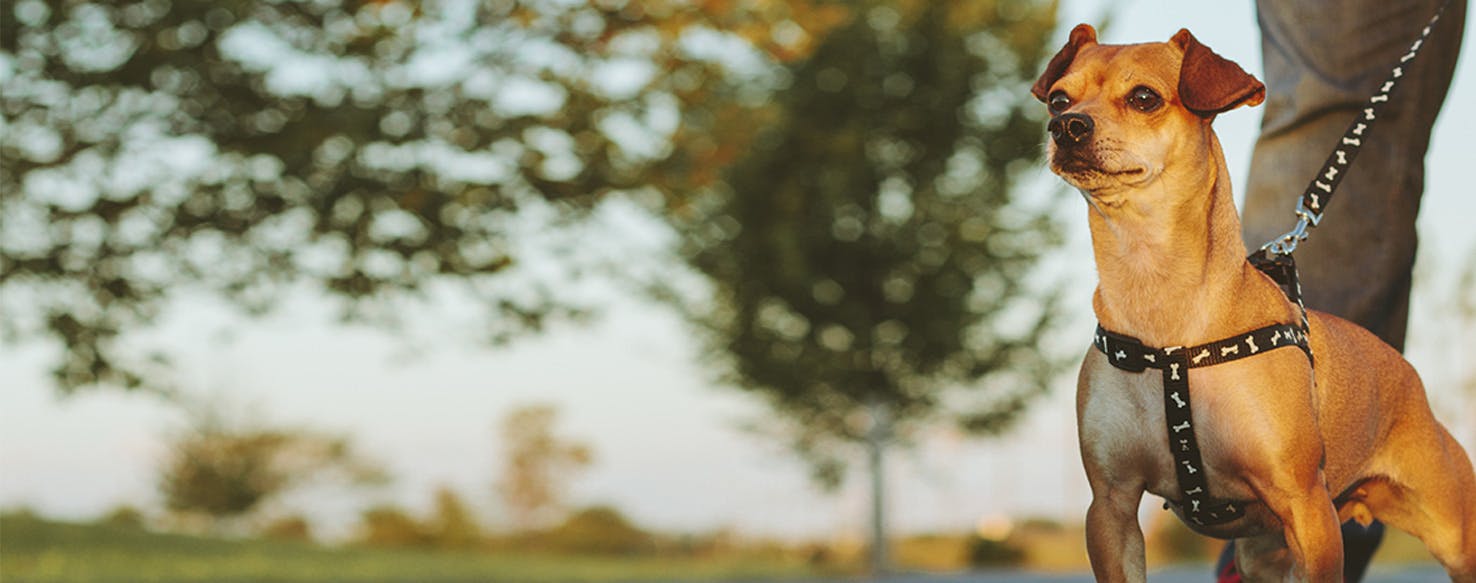- Home
- The Daily Wag!
- Behavior
- Why Do Dogs Attack Their Leash
Why Do Dogs Attack Their Leash

Common
Normal
Introduction
You are starting leash training or maybe your dog has been on a leash for a long time and then they start biting and pulling on his or her leash like it is a game of tug-of-war. In all due respect, this can get very annoying when you are trying to take a leisurely stroll with your pet. So, why is that your dog is suddenly attacking the leash? You may wonder if they are playing a game or maybe they are being defiant or maybe yet your dog really hates their leash. There is probably more to this quirky and annoying behavior. So lets take a closer look at it and get to the root of this problem.
The Root of the Behavior
A root cause of aggressive behaviors towards a leash can be part of your dog's pack mentality. In a pack, there is the alpha dog and there is also the underdog or lowest dog on the rung. If your dog is an alpha dog, he or she may not yet see you as the pack leader and attack his or leash out the hierarchy of his or her mind. This is really an issue of control and who is in charge. There are other reasons a dog may attack a leash including boredom, excitement, or even overstimulation. Going on a walk is a high stimulus activity for a dog and sometimes it can be quite overwhelming with different smells, different dogs, and new things they have never seen before. This over stimulus can cause them to act inappropriately, regardless of training. Another root cause of this behavior may stem from improper leash training or lack of leash training.
A dog who has not been properly trained to walk on a leash may have all types of issues until they learn how to walk on a leash. It may also be due to who is walking the dog. For example, if you are walking your dog and you are pulling your pup back a lot, they may foresee this as a game like tug of war and will attack the leash, pull back, or even bite at the leash. If none of the above is the cause, it may be that there is too much tension on the leash and it is bringing discomfort, irritation, or even pain to your pooch. Be sure to check your dog's neck for any signs of irritation or pain. There are several ways that these root causes can be remedied and get your dog walking on a leash without a hitch. Always remember to be patient and kind when training.
Need advice about your pet's health?
Get answers fast from a veterinary professional 24/7 in the Wag! App.
Get Vet ChatEncouraging the Behavior
There are several things you can do to encourage your dog not to attack their leash. For example, dogs utilize their mouths a lot when they have aggression. So, if it is out of boredom or playfulness, bring a toy with you that your dog can carry in his or her mouth. Or offer a treat as positive reinforcement as you walk. Another good way to encourage your dog to walk nicely and not attack the leash is to train your dog to ‘leave it’ or even ‘drop it.’ Always reward your dog for following directions with praise or with treats. This will reinforce the correct behavior.
If the aggressive attacking of the leash is really hindering your walks, then try walking faster like you have an important place to get to on time. You are the leader, your dog will follow suit. If for some reason the collar or leash is bothering your pup, you may want to use a gentler lead. Make sure the collar is not too tight on your dog and you are not pulling or dragging your dog. With training, it is important to be consistent and firm but caring. A new puppy will take time to properly leash train. If you are still having trouble, you may want to consult a professional dog trainer to help you promote positive behaviors in your dog.
Other Solutions and Considerations
Keep in mind that you can start leash training as young as a few weeks old, but be sure to have your puppy vaccinated before going out into the world. Start by introducing him or her to the leash and collar. It’s a good idea to introduce the leash when your pup is in a positive mood like during feeding or when you are giving him or her affection. At this point you are only introducing the leash, so just slip it on and allow your dog to just wear it around the house to get used to it. If your dog acts out or gets aggressive over the collar and leash, try using treats and toys to make him or her a bit more accepting of the them. The idea is to keep this a positive experience for your dog.
Conclusion
Whatever reason your dog is attacking his or her leash, just remember to be patient and consistent with your training. If you are the leader your the pack, mentality in your dog will have your pooch falling in line. Also, remember to be positive and affectionate. Dogs are social creatures that thrive on positivity.
